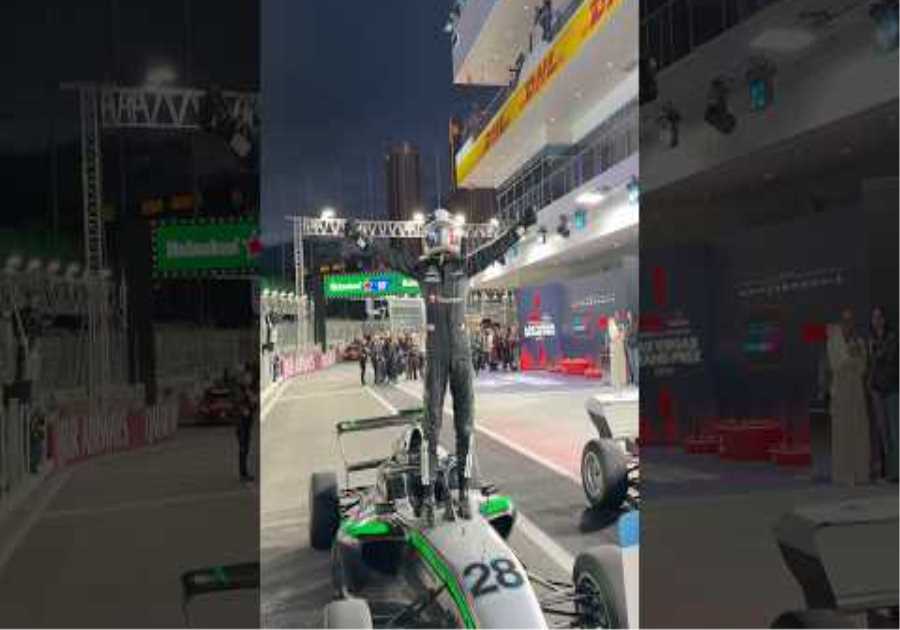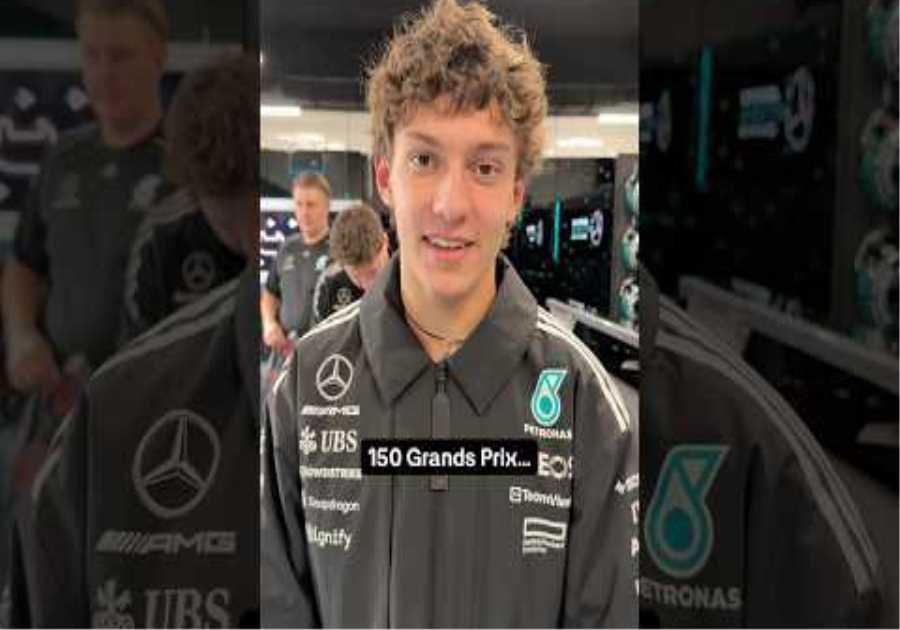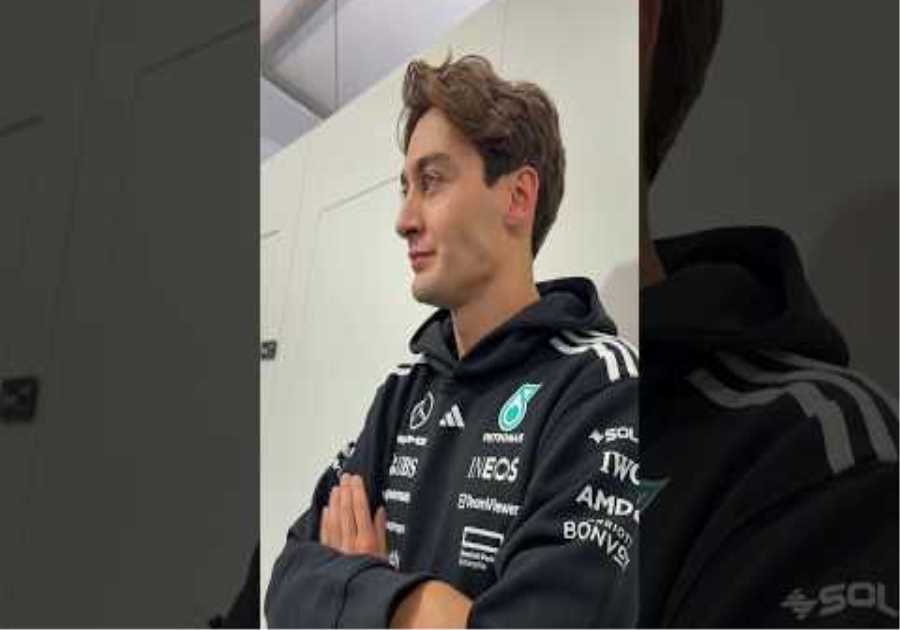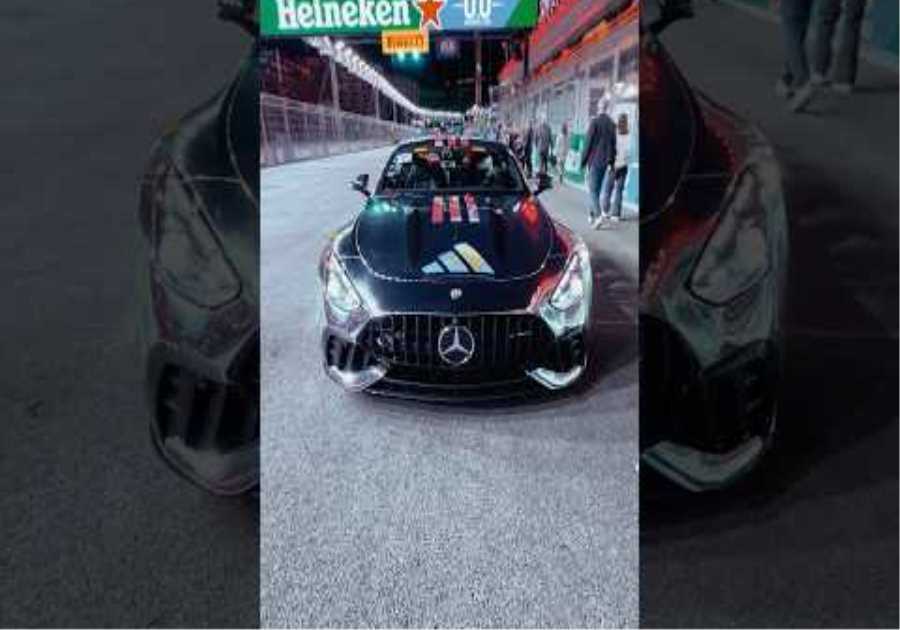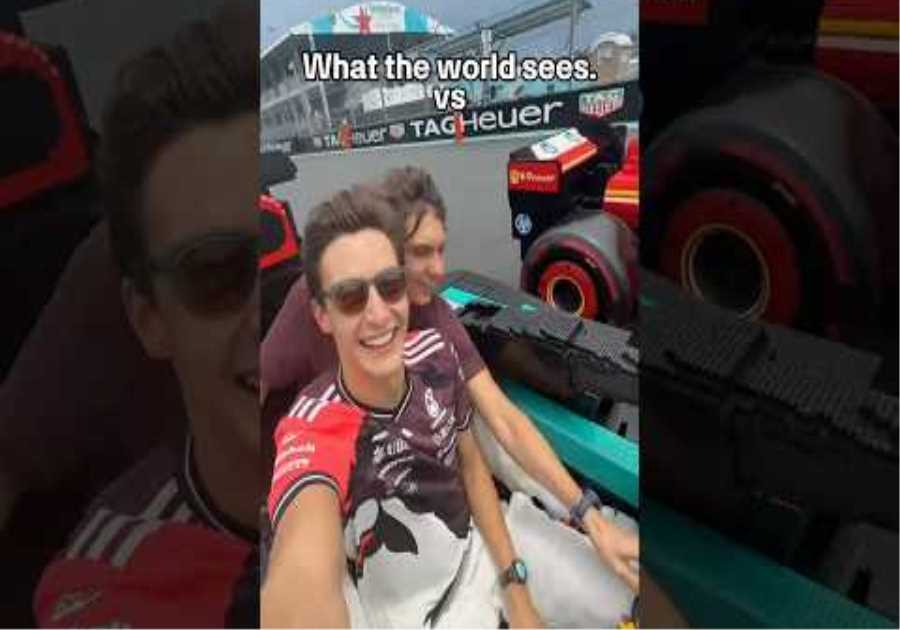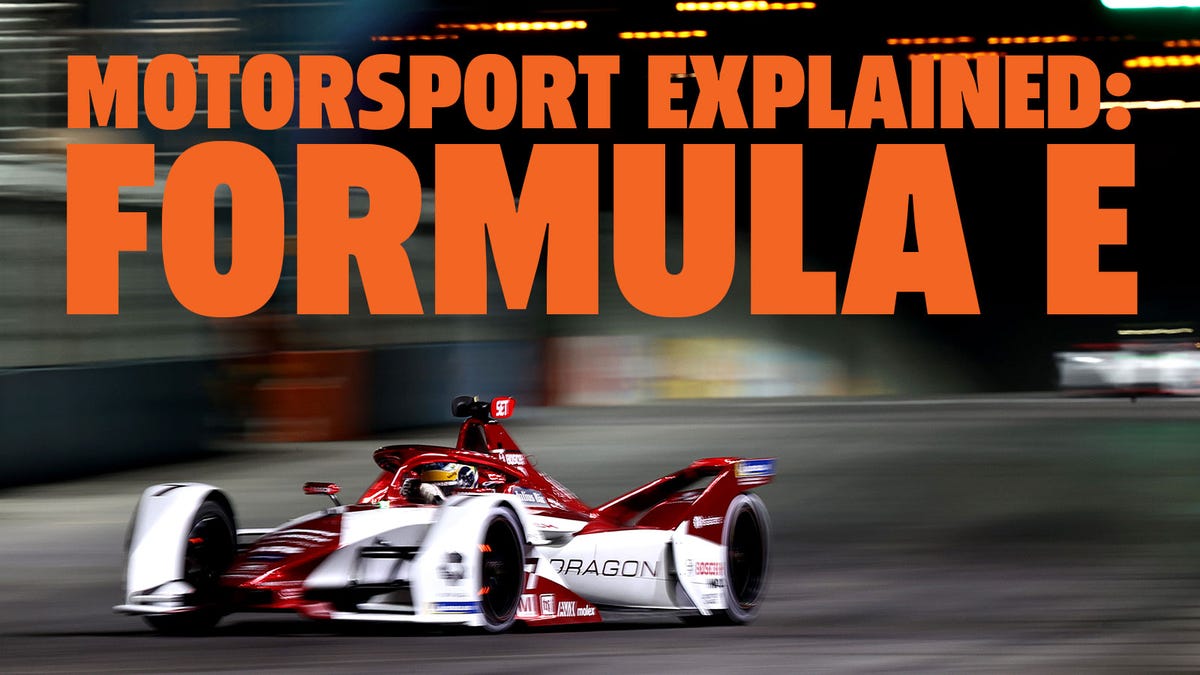
Formula E is back, back back! Photo: Francois Nel / Staff (Getty Images)
Formula E is back, baby! And this is the year you should finally get on board the electric racing hype train.
This weekend sees the debut of the eighth season of the all-electric series. A lot has changed since Formula E first debuted in Beijing in 2014, when drivers had to swap cars halfway through the race. Now, it’s a legitimate World Championship, and packs in close racing, fierce rivalries and cutting-edge tech.
So 2022 should really be the year you sit up and start watching.
To make sure you’re up to speed and ready to follow all the on-track action in Saudi Arabia as soon as it kicks off, we’ve run through all the key changes going into season eight. Here, you’ll find all the developments and dramas that you need in order to keep ahead of Formula E this year.
Photo: Francois Nel / Staff (Getty Images)
The Cars
Season eight will be the final time that Formula E runs its Gen 2 cars. These machines were premiered in season five and have produced some stellar racing over the years.
In their final season, the Gen 2 cars offer 220kW of power during the race, which will rise to 250kW when drivers activate Attack Mode. This means that the car’s base power level is 10 percent higher in the new season. Hopefully that means even closer, faster racing.
That extra power means that the Gen 2 car can accelerate from 0-62 mph in 2.8-seconds and can reach a top speed of 174 mph.
While the cars may look the same and have the same power output, they aren’t identical across the grid. Each team’s car comprises the same Spark-designed chassis and suspension, but then they are free to customize the drivetrain and software. This is what separates the pack come race day.
Screenshot: Formula E
the team
While the cars stay the same this year, there’s been changes to who runs them.
Audi and BMW are out, and Mercedes is preparing to race its final season in Formula E — which it enters as the defending double World Champions.
The departure of Audi means there are now 11 teams on the Formula E grid, each fielding two drivers. Defending champions Mercedes EQ line up alongside Formula E heavyweights such as Jaguar TCS Racing, DS Techeetah, and Envision Racing.
After BMW left the sport, its former team has been rebranded as Avalanche Andretti Formula E and is ready to take on ROKiT Venturi Racing, TAG Heuer Porsche, Nissan e.dams and Mahindra Racing, which picked up its maiden win in 2021.
Further down the pecking order, you’ll find Dragon / Penske Autosport and Nio 333.
To take a closer look at the livery of each team, check out our definitive ranking of all the team’s 2022 styles — and their similarities to a certain Taylor Swift album.
Photo: Peter Fox / Stringer (Getty Images)
The Drivers
The big Formula E driver news this year is that ex-Alfa Romeo F1 driver Antonio Giovinazzi (pictured above) is making the switch to electric racing. He’ll join the Dragon / Penske Autosport team and partners Brazilian racer Sérgio Sette Câmara.
Elsewhere on the grid, former Formula E world champion Lucas di Grassi has joined ROKiT Venturi Racing after he lost his seat following the departure of Audi. His new partnership with two-time race winner Edoardo Mortara could be a spicy pairing when racing gets underway.
There’s also change at Mahindra, where Oliver Rowland now partners with Alexander Sims. And that change means that the lineup at Nissan e.dams now includes triple-race-winner Maximilian Günther and Sebastien Buemi.
Avalanche Andretti has also welcomed former Indy Lights champion Oliver Askew to the team, he partners Jake Dennis, who was one of last year’s standout drivers. Finally, Nio 33 has signed rookie Dan Ticktum to race alongside Oliver Turvey.
The remaining five teams comprise:
Mercedes EQ: Nyck de Vries & Stoffel Vandoorne
Jaguar TCS Racing: Sam Bird & Mitch Evans
DS Techeetah: Antonio Felix da Costa & Jean Eric Vergne
Envision Racing: Robin Frijns & Nick Cassidy
TAG Heuer Porsche: Andre Lotterer & Pascal Wehrlein
Photo: Francois Nel / Staff (Getty Images)
qualifying
Now the real changes start.
For 2022, Formula E will run a new knockout qualifying format to set the grid for each race. Under the new rules, drivers will be divided between two groups of 11 based on their position in the Drivers’ World Championship. Each group will have a 10-minute session in which drivers must set their fastest lap.
After this, the fastest four from each group progresses to the quarter-finals, or the “duel stage”. This will see the drivers face off head-to-head, where they will battle with 250kW of power for a spot in the semi-final and then the final.
The winning driver of the final takes pole position and will line up on the grid alongside the runner-up in second. The semi-finalists will line up third and fourth, the quarter-finalists between fifth and eighth – according to their lap times.
Screenshot: Formula E
It then gets a bit confusing with those who don’t make it through to the knockout stage, as Formula E explains:
“The fifth to 12th-placed drivers who competed in the polesitter’s group will fill the odd positions on the grid. The corresponding drivers from the other group will be classified in the even grid slots. So, if the polesitter comes from Group 1, the fifth placed driver in Group 1 will line up ninth on the starting grid and the fifth placed driver in Group 2 takes 10th and so on.”
understood? Good.
Photo: Handout / Handout (Getty Images)
The Race
Once the grid is set, it’s time to race. and in Formula Ethat means battling it out for 45 minutes, plus one final lap of racing.
The drivers will have 220 kW of power in their cars for the race, which is equivalent to 297 bhp. There’s no need to stop and change tires in Formula E, so to add an element of strategy the sport introduced Attack Mode in its fifth season.
Attack Mode forces drivers off the racing line twice over each race. For doing this, they are rewarded with a boost of energy, taking their car’s power up to 250 kW.
Photo: Handout / Handout (Getty Images)
But there’s more. As there’s no possibility of re-charging the mid-race cars, drivers must be mindful of their energy use through the ePrix. Each driver begins a race with 52 kWh of usable energy and must monitor their usage as they accelerate, brake and try to pass other cars.
The cars are also fitted with regenerative braking technology, which tops up the charge of the battery when they brake into the corners.
It’s because of this energy management that races often end with the pack leveling out in the closing stages. And that results in a close fight for the win.
Formula E also has similar safety calls to other motorsport series. The race director may throw a full-course yellow to neutralize the race if necessary. Or, if there’s a big crash or a car fails in a hard-to-reach area, they can deploy the series’ Porsche Taycan safety car.
Another big change this year is that Formula E will no longer reduce the amount of usable energy drivers have relative to the time spent under safety car conditions. Instead, Formula E will increase the time of the race as compensation for time spent both behind the safety car and under full course yellow conditions.
Photo: Daimler Media
TheChampionship
Season eight will be Formula E’s second as a recognized, FIA World Championship. That means Mercedes EQ and its driver Nyck de Vries will be out to defend their position as the constructors and drivers World Champions. So points at every race will be vital for any team or driver vying for the crown.
Formula E follows the same points scoring system as Formula 1, with 25 points awarded to the winner of a race, 18 for second and 15 for third. The rest of the top ten are awarded 12 for fourth, 10 for fifth, eight points for sixth, six points for seventh, four for the driver in eighth, two points for ninth place and just one point for whoever comes 10th.
There are, however, additional points up for grabs over a race day. Here’s how Formula E dishes out the extra points:
“The driver starting at the front, from Julius Baer Pole Position, picks up an extra three points, while the driver who sets the fastest lap during qualifying gets an additional point.
“During the race, the driver who completes the fastest lap also receives one additional point. However, the driver must finish in the top-10 places to gain the fastest lap bonus point. If not, then the driver in the top-10 with the next fastest lap takes the honor.”
Photo: Handout / Handout (Getty Images)
The Circuits
As with every year in Formula E, the calendar is made up of city circuits that pack the streets of major metropolises around the world.
The circuits Formula E visit are tight and twisting to challenge drivers but also feature plenty of fast sections to maximize overtaking opportunities.
this year, Formula E kicks off the season with two races in Diriyah, Saudi Arabia. Taking place in a UNESCO world heritage site, the 1.6 mile circuit comprises 21 corners and should take teams 1:08.811 to lap, if last year’s fastest times are anything to go by.
After this, the season takes in races in Mexico City, Mexico; Cape Town, South Africa; Rome, Italy; Monaco; Berlin, Germany; China, New York, United States; Vancouver, Canada; London, UK; and Seoul, South Korea.
Cape Town, Vancouver, and Seoul are all brand new locations for Formula E in 2022. The series is also still to confirm the exact location for its race in China, and there remains one to be confirmed race that is set to take place in March.
Photo: Handout / Handout (Getty Images)
As it stands, the calendar looks like this:
January 28-29, 2022: Diriyah, Saudi Arabia
February 12, 2022: Mexico City, Mexico
February 26, 2022: Cape Town, South Africa
March 19, 2022: to be confirmed
April 9, 2022: Rome, Italy
April 30, 2022: Monaco
May 14, 2022: Berlin, Germany
June 4, 2022: to be confirmed, China
July 2, 2022: Vancouver, Canada
July 16-17, 2022: New York City, United States
July 30-31, 2022: London, United Kingdom
August 13-14, 2022: Seoul, South Korea
Photo: Francois Nel / Staff (Getty Images)
How to watch
So, now that you know what to expect from the upcoming season, here’s how to stay up to date with all the action.
In the past, Formula E has been a tricky sport to watch here in the US. But the best way to find out when and where a race will be on in your area is to check the Formula E website. In the United States, here’s where you’ll likely find certain events:
CBS Sports Network: races
CBS Online: practice and qualifying
Formula E YouTube:practice
Formula E website:practice
Formula E app:practice


